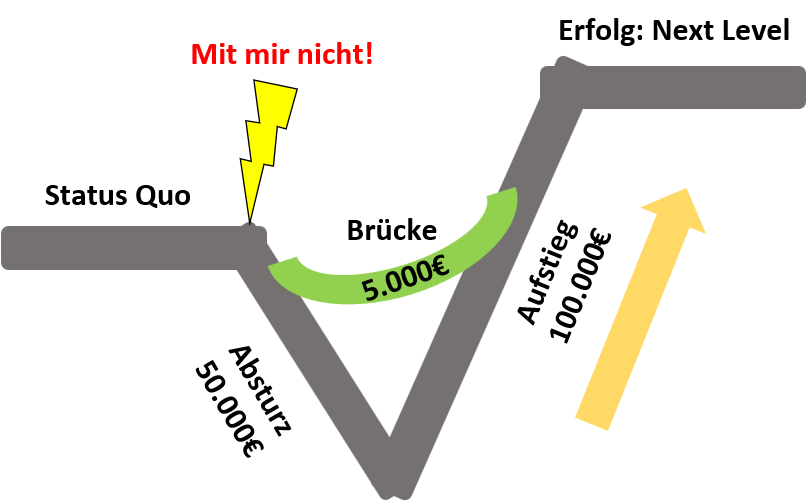Change Curve
The 6 phases of a change process and how a trainer can positively influence it

The curve of change illustrates a process of change. People go through different emotional stages during the process.
The Change Curve can be traced back to the Swiss-US American psychiatrist Elisabeth Kübler-Ross. In the 1960s she dealt with the various phases that the terminally ill go through and developed this model. In doing so, she wanted to ensure that people (doctors, nursing staff, relatives and acquaintances) responded better and more intensively to the needs of the terminally ill.
It was only much later that the Kübler-Ross model was adopted, further developed and adapted by various authors in the business context.
The change curve is a classic objection anticipation model. This is about predicting any objections that a customer or seminar participants could raise. The Change Curve model can be used sensibly in the area of selling a seminar or in acquisition.

The various phases in the seminar context are briefly explained below.
Resistance
Change often causes resistance first in most people ("Not with me!"). They fear (higher) workload that they have to step out of their comfort zone and they often feel insecure. The first reflex is resistance and rejection.
Crash
If people are not guided during the change process or if they are left alone, a crash can occur. This means that people are resisting change more and more and the chance of achieving acceptance of change continues to decrease.
Rock Bottom
The period of resistance eventually ends. People realize that change cannot be resisted. The curve is at its lowest point. Now the change assumption section begins. Man opens up to innovation. In the best case, from intrinsic motivation , because he has noticed that the change will develop positively. In the worst case, out of resignation. In the last point, the person must be caught by the trainer, extrinsically motivated and guided on the path of ascent.
Rise
Once the process of change has begun, the ascent begins. Here it is important that people do not let up and remain open to change(s). He realizes that he will grow with them and can broaden his perspective .
Next Level
In the next step, people learn how to deal with the change. They deal with it intensively. This causes the curve to rise to its peak.
The peak of the curve is above the starting point. The intended benefit is achieved. The seminar participants were open to change and ready to learn something new.
Bridge
A trainer ensures that the fall is not so deep. Figuratively speaking, he is building a bridge. This should help the participants to accept the change more quickly and easily. In this way, the resistance is prevented right at the beginning and the participants do not get into the crash phase. The trainer takes them directly to the next level phase via the bridge.
Example Based On The Graphic
The executive floor of a company has bought new software. The change has met with resistance from most employees. For example, this can be expressed as follows:
- "Why something new? The old software always worked well"
- "I'm too old to get used to the new software now."
- "I don't want to learn something new!"
- "...."
Since the executive floor has not given any thought to how the employees will react to it, they are left alone with their thoughts and emotions of having to adapt to new software. The resistance grows and the employees get into the crash phase. In this phase, the company loses money (€50,000 in the figure) because the new investment has not yet been used.
At some point the bottom will come. This is the turning point. The employees notice that they are not getting anywhere with their resistance. The process of change can now begin. The employees open themselves to the new software and deal with it.
In the ascent phase, the company slowly begins to make a profit again (€100,000 in the figure).
In the next level phase, the change process is complete. The employees are familiar with the new software and can work with it economically.
Example Using The Bridge
In order to avoid the phases of the crash and the low point, and thereby making a loss, the executive floor gave sufficient thought to how the employees could react (anticipating objections) before purchasing the new software. So they hired a trainer to guide the employees through the bridging phase.
This trainer prevents the great resistance and helps the employees to adapt to the new software both mentally and technically. As a result, the company has fewer losses (€5,000 in the figure) and can work more quickly with the new software.